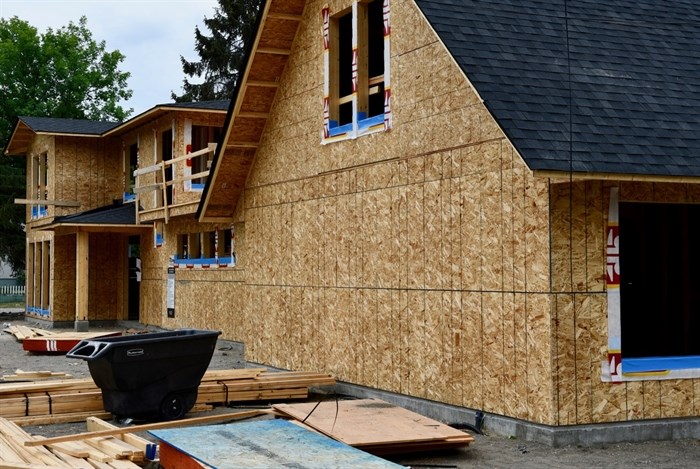Penticton has a plan to fix dramatic decline in housing starts
Since 2017, Penticton has averaged more than 500 housing starts every year but that has changed dramatically since the Bank of Canada started hiking interest rates in the spring of 2022.
“I think there is an impression we’re building more than we ever have,” Blake Laven, the city’s director of development services, told city council yesterday, Aug. 1. “But there have not even been 150 starts over the past full calendar year.”
Laven presented two reports to council. One was a housing needs assessment and the other was a grant application outlining a seven-step plan to build more than 400 more homes than the minimum 240 needed each year just to keep up with anticipated population growth.
By 2045, another 20,000 people are expected to live in Penticton, a 50% increase over the roughly 37,000 living there now.
Not only is more housing needed but it has to be targeted to working age people. That demographic is declining as those over the age of 65 are expected to make up 38% of the population by 2045.
There’s also a backlog of 162 people waiting for below-market housing and as many as 286 more subsidized housing units may be needed by 2031, the report says.
Laven wants to take advantage of the federal government’s new $4 billion Housing Accelerator Fund. Penticton is eligible for up to $10 million.
In order to qualify, a city has to have at least a seven-step plan to add more housing than would normally be built. Since the funding is for three years, Penticton is looking at adding 407 extra units by the end of 2026.
READ MORE: Penticton may be the next Okanagan hot spot
The first step in its plan is to hire three new staff members, two planners and a building inspector, to speed up the application approval process.
It will be up to the council of the day in 2026 to decide if those people will continue on after the grant money runs out.
The city will also look at using city-owned land for affordable housing.
One option Laven suggested is at the Galt Avenue roundabout where there will be land left over from the former Shielings Motel.
The city is also looking at replacing a firehall. Housing could be included in the new community safety building or the land on the former firehall site could be used for affordable housing.
The city could prezone land for higher density, infill development and contribute to beautification works normally paid for by developers.
The plan will also look at changing parking regulations to significantly reduce expensive parking in some areas such as downtown, near Okanagan College and along major streets. Some of those lost parking spots could be moved to city-owned land.
Developers might also be allowed to build to higher densities if the extra units are below market value.
About 37% of the money, or $4 million, can be used to fund housing directly. About 10% ($1 million) can be used for the additional staff and the other 53%, ($5.7 million) can be spent on infrastructure upgrades for things like roads, upsizing sewer lines or buying property for parks.
The grant application has to be submitted by Aug. 8.
To contact a reporter for this story, email Rob Munro or call 250-808-0143 or email the editor. You can also submit photos, videos or news tips to the newsroom and be entered to win a monthly prize draw.
We welcome your comments and opinions on our stories but play nice. We won't censor or delete comments unless they contain off-topic statements or links, unnecessary vulgarity, false facts, spam or obviously fake profiles. If you have any concerns about what you see in comments, email the editor in the link above. SUBSCRIBE to our awesome newsletter here.




